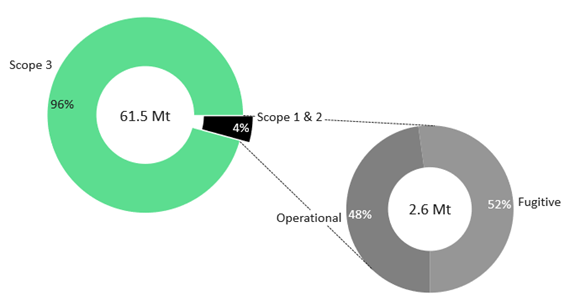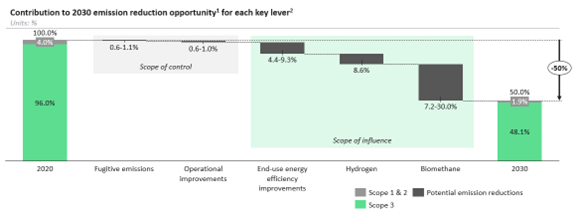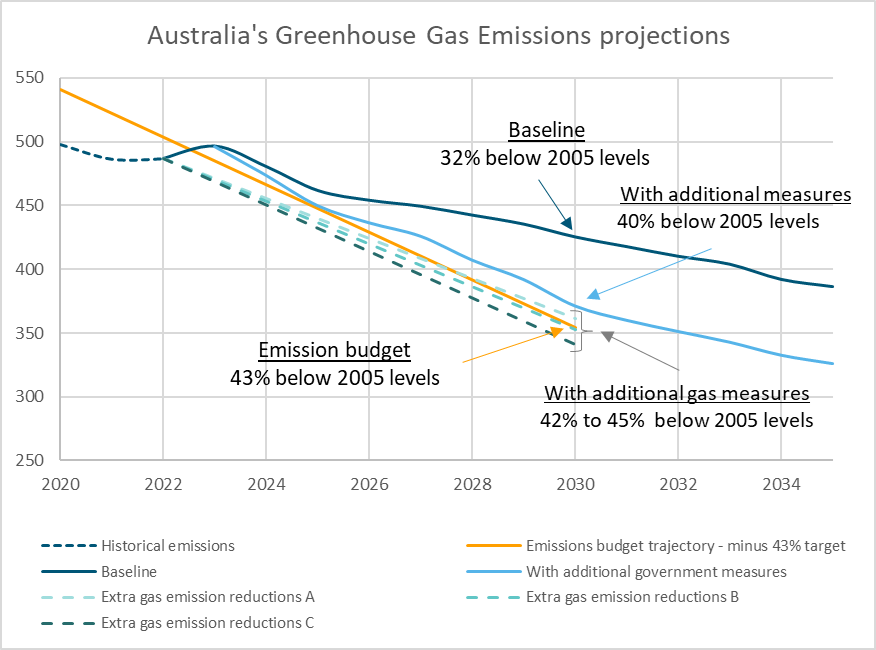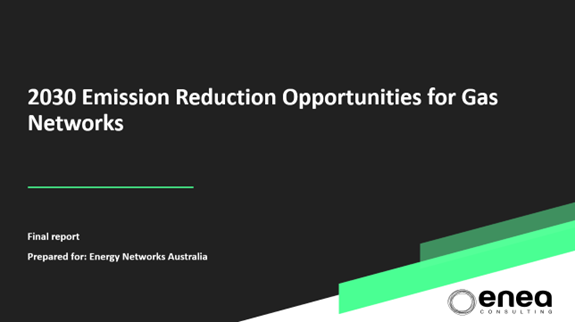How renewable gas policies can help Australia achieve its 2030 emissions target
Australia has a long history of renewable electricity policy mainly driven by the renewable electricity target. This has resulted in continued growth in renewable generation, which reached almost 35 percent in the National Energy Market (NEM) last year, as well as emission reductions from electricity. Similar policies, applied to gas, would create new abatement opportunities to help Australia reach its emission reduction goals.
Natural gas is a major energy source for Australia providing residential, commercial and industrial customers with a reliable and convenient way to heat their homes and businesses and to drive industrial processes. Gas is also an essential contributor to power generation and is becoming more important to support growing levels of variable renewable electricity in the grid.
While governments around the country (and the world) have supported renewable electricity in many forms for many years (e.g. feed in tariffs, renewable targets, appliance subsidies, etc.), they have only in the past few years introduced policy settings for renewable gases such as hydrogen. Most of the current policies are grants to help demonstrate renewable gas technology, but these have so far had limited impact on market development, which was identified as a policy gap in Gas Vision 2050: 2022 Outlook
What is the opportunity?
A new report from the industry has identified a range of policy options to help Australia meet its 2030 emission reduction targets.
Domestic use of gas contributes 61.5 Mt CO2 to Australia’s carbon emission, or about 12 per cent of the total emissions in 2022. In comparison, the emissions from electricity generation were 158 Mt and from transport were 91 Mt.

Figure 1: Emissions from Australia’s domestic gas use (Source: ENEA Consulting (2022), 2030 Emission Reduction Opportunities for Gas Networks)
The emissions from gas are dominated by the end use (Scope 3[1]) of the gas by customers. This end use includes using gas to heat homes or in an industrial furnace to produce heat. The use of gas by customers represents 96 per cent of the emissions from gas. These emissions are outside the control and scope of gas distribution businesses. Gas Vision 2050 has highlighted opportunities to decarbonise gas using hydrogen and/or biomethane, but additional opportunities also exist through improved efficiency of gas appliances that reduces the amount of gas consumed, and hence reduces emissions.
The remaining emissions (Scope 1 and 2) occur from the use of gas to transport it via pipelines and distribution networks, and losses from accidents or maintenance. Reducing these emissions can be difficult as they relate to capital investments needed that cannot be recovered under current regulatory settings or emissions arising from accidental strikes by third parties onto gas network assets.
Supportive policies would result in emission reductions from domestic gas use. Moderate supportive policies including a renewable gas target of 20 per cent could achieve a 16 to 30 per cent reduction in emissions from domestic natural gas use by 2030 while stronger settings, such as a 50 per cent renewable gas target, may achieve up to a 50 per cent reduction.

Figure 2: Emission reduction opportunities for Australia’s domestic gas use (Source: ENEA Consulting (2022).
Good progress is being made in developing enabling policies, such as the hydrogen Guarantee of Origin certification scheme[2] but additional market development policies are needed. There are a broad range of policies that can be introduced at moderate or stronger settings including:
- Renewable Gas Target: A renewable gas target of 20 per cent to 50 per cent covering hydrogen, biomethane and renewable synthetic methane could support emissions reduction from the use of gas. Note that this could also reduce operational emissions as the natural gas in the pipeline is replaced by a proportion of renewable gas.
- Increased Appliance Efficiency Mechanism: Combining a minimum 6-Star hydrogen ready appliance mandate with financial support for households to increase appliance replacement rates by 50 to 200 per cent could deliver reduced gas use and reduce emissions for the same amenity, while providing residential hydrogen readiness.
- Allowing Infrastructure Emissions Reduction Cost Recovery: Changes to gas infrastructure regulation could allow regulated gas infrastructure to recover the cost of operational and fugitive emissions reduction. Under current regulation, infrastructure businesses must demonstrate to the Australian Energy Regulator (AER) a zero or negative cost to customers in order to recover the cost of emission reduction including fugitive emission reduction.
Reaching national emission targets
Australia’s latest emission projection shows a gap between the 2030 target and the projected level of emissions, even after taking into account new policies such as the proposed reforms for the Safeguard Mechanism[3] and the 80 per cent renewable electricity target. Supportive policies to reduce emissions from gas could contribute an additional 10 to 31 Mt CO2 of abatement by 2030, and allow Australia to meet its 2030 target, as shown below.

Figure 3: Australia’s projected emission and impact of additional gas policies (Source: DCCEEW (2022), Australia’s emissions projections, 2022; ENA analysis)
Renewable gas policy development
The projected gap between 2030 emissions and the government target will require new policies to be developed. Urgent government and industry action is required to scope, design and implement a range of renewable gas policies for them to be able to contribute to the 2030 emissions reduction goal. The first and most critical of these policies is the establishment of a national renewable gas target.
Industry Report
The full report by ENEA showing a wide range of policy options can be found at:

[1] See the Clean Energy Regulator for details on Scope 1, 2 and 3: https://www.cleanenergyregulator.gov.au/NGER/About-the-National-Greenhouse-and-Energy-Reporting-scheme/Greenhouse-gases-and-energy
[2] https://www.cleanenergyregulator.gov.au/Infohub/Markets/guarantee-of-origin
[3] https://consult.dcceew.gov.au/safeguard-mechanism-reform-consult-on-design



